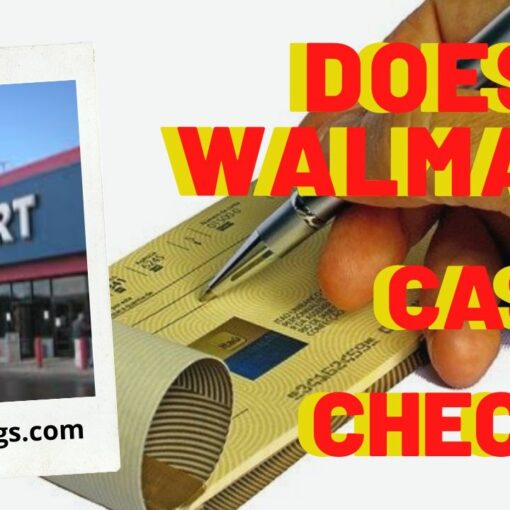DDP: Delivered Duty Paid Shipping Terms – What Is Delivered Duty Paid (DDP)?
 Delivered duty paid (DDP) is a shipping agreement where the seller assumes most of the responsibility, risk, and costs of transporting goods. The seller is responsible until the buyer receives or transfers the merchandise at the destination port. This agreement includes paying for shipping costs, export and import duties, insurance, and any other expenses incurred during shipping. The buyer is only responsible once the goods arrive at an agreed-upon location in the buyer’s country or region.
Delivered duty paid (DDP) is a shipping agreement where the seller assumes most of the responsibility, risk, and costs of transporting goods. The seller is responsible until the buyer receives or transfers the merchandise at the destination port. This agreement includes paying for shipping costs, export and import duties, insurance, and any other expenses incurred during shipping. The buyer is only responsible once the goods arrive at an agreed-upon location in the buyer’s country or region.
Under the Delivered Duty Paid (DDP) Incoterms 2020, the seller is responsible for all costs to deliver the goods to the final destination. The seller must pay both export and import formalities, fees, duties, and taxes. The buyer is free of any risk or cost until the goods are unloaded from the vehicle at the named place of destination, usually the buyer’s place of business.
Delivery Duty Paid (DDP Shipping)
- Seller assumes shipping responsibility – Delivered duty paid (DDP) is a delivery agreement whereby the seller assumes all responsibility of transporting the goods until they reach an agreed-upon destination.
- Seller assumes delivery costs – The seller must arrange for all transportation and associated costs including export clearance and customs documentation required to reach the destination port.
- Buyer benefits most – A DDP benefits a buyer as the seller assumes most of the liability and costs for shipping.
- Seller assumes risk – The risks to the seller are broad and include VAT charges, bribery, and storage costs if unexpected delays occur.
Understanding Delivered Duty Paid (DDP Shipping)
Delivered duty paid (DDP) is a shipping agreement. It places the maximum responsibility on the seller. In addition to shipping costs, the seller is obligated to arrange for import clearance, tax payment, and import duty. The risk transfers to the buyer once the goods are made available to the buyer at the specified destination. The buyer and seller must agree on all payment details and state the name of the place of destination before finalizing the transaction.
DDP was developed by the International Chamber of Commerce (ICC) in an attempt to standardize shipping globally. As a result, DDP is most commonly used in international shipping transactions. The benefits of DDP are heavily in favor of the buyer. Buyers are exposed to less liability and fewer costs in the shipping process. The majority of the responsibility, cost, and risk fall squarely on the seller’s shoulders.
DDP Shipping – Seller’s Responsibilities
The seller arranges for transportation through a carrier via land, sea, or air. The seller is then responsible for the cost of that carrier as well as acquiring customs clearance in the buyer’s country. This includes obtaining the appropriate approvals from the authorities in that country. Depending on the country, the seller may need to acquire a license for importation. However, the seller is not responsible for unloading the goods.
The seller’s responsibilities include providing the goods, drawing up a sales contract and related documents, export packaging, arranging for export clearance, satisfying all import, export, and customs requirements, and paying for all transportation costs including final delivery to an agreed-upon destination. Additionally, the seller must arrange for proof of delivery and pay the cost of all inspections and must alert the buyer once the goods are delivered to the agreed-upon location. In a DDP transaction, if the goods are damaged or lost in transit, the seller is liable for the costs.
DDP Shipping – Incoterm Obligations at a Glance
Seller’s Obligations
- Goods, commercial invoice and documentation
- Export packaging and marking
- Export licenses and customs formalities
- Pre-carriage and delivery
- Loading charges
- Main carriage
- Proof of delivery
- Import formalities and duties
- Cost of all inspections
- Delivery to the named place of destination
Buyer’s Obligations
- Payment for goods as specified in the sales contract
- Assist seller in obtaining any documents or information necessary for export or import clearance formalities
Why is DDP Shipping Used?
DDP is an international shipping standard designed to protect buyers. With DDP, buyers aren’t liable for the actual product costs and taxes. As a result, buyers are more likely to purchase products without fear of being scammed or having to pay high taxes. Here are the top four reasons why DDP is used:
- Protect the buyer – DDP helps the buyers not get swindled. Since the seller assumes all the risk and cost of shipping products, it’s in their best interest to make sure customers actually receive what they ordered. The time and cost associated with DDP shipping are too big of a burden for scammers to even consider using it.
- Ensure safe delivery across countries – So much can go wrong when shipping packages halfway around the world. Every country has its own laws regarding transport, import duties, and shipping fees. DDP makes the seller become diligent on only sending packages on the best and safest routes.
- Ensure safe delivery by air or sea freight – Depending on the type of product and where it’s sold, safe delivery by air or sea can be difficult. This ensures sellers don’t take the money and run.
- Hold sellers responsible for international fees – If a buyer has to pay customs fees, there’s a chance the sale won’t happen because they don’t know the cost of these fees. With sellers paying international fees, DDP allows for a smoother purchasing experience because the buyer doesn’t have to worry about paying the fees.
DDP Shipping Fees
Though DDP is a popular option for sellers, it comes with a high amount of fees. Sellers assume responsibility for ALL fees:
- Shipping fees – Shipping products via sea or air can be expensive. You’ll want to take the time to calculate how much it will be to ship products internationally.
- Import and export customs duties – If DDP is handled poorly, inbound shipments are likely to be examined by customs, which causes delays. Late shipments may also occur if you end up choosing a less reliable transportation service because its the cheapest option.
- Damage fees – Any damage incurred to products is a cost paid for by the seller. As the seller, you will have to pay for any damage done to the products, and even have to ship them again to their destination.
- Shipping insurance – Although shipping insurance is not obligatory, most sellers prefer to purchase insurance to lower risk.
- VAT – DDP assigns the seller the responsibility of paying the VAT. However, it is possible to change with the consent of the buyer and seller. The VAT can be expensive, sometimes 15-20% of the value of the goods plus duty. In many cases and depending on what they do with the goods, the buyer may be eligible for a VAT refund. VAT refunds accrue to the buyer. This means that, at best, you have to absorb the VAT; at worst, you absorb the VAT while your customer gets a VAT refund.
- Storage and Demurrage – Under DDP, the seller must absorb the costs associated with customs clearance. This includes any storage or demurrage charges incurred due to delays by customs authorities, other government agencies, delivery drivers, and air/ocean carriers. Since these are unanticipated costs, they can quickly eat into your profits or completely negate them.
Managing Customs
It is not always possible for the shipper to clear the goods through customs in foreign countries. Customs requirements for DDP shipments vary by country. In some countries, import clearance is complicated and time-consuming. In those cases, it is preferable that the buyer manages this process. Especially if customs clearance requires specialized knowledge and experience. If a DDP shipment does not clear customs, customs may ignore the fact that the shipment is DDP and delay the shipment. Depending on Customs’ decision, this may result in the seller being forced to use different, more costly delivery methods.
Special Considerations
DDP is used when the cost of supply is relatively stable and easy to predict. The seller is subject to the most risk, so DDP is normally used by experienced suppliers. However, some experts believe that there are reasons U.S. exporters and importers should not use DDP. U.S exporters, for example, may be subject to value-added tax (VAT) at a rate of up to 20%. Additionally, the buyer is eligible to receive a VAT refund. Exporters are also subject to unexpected storage and demurrage costs that might occur due to delays by customs, agencies, or carriers.
Bribery is a risk that could bring severe consequences both with the U.S government and a foreign country. For U.S. importers, because the seller and its forwarder are controlling the transportation, the importer has limited supply chain information. Also, a seller may pad their prices to cover the cost of liability for the DDP shipment or markup freight bills. In some cases, freight bills have been marked up by $3,000 to $7,000. If DDP is handled poorly, inbound shipments are likely to be examined by customs, which causes delays. Late shipments may also occur because a seller may use cheaper, less reliable transportation services to reduce their costs. (Source: investopedia.com)
DDP Shipping – Common Issues
- Import Clearance – Some countries, including the US, do not permit forwarders to complete customs clearance. Therefore, the supplier must be registered as an importer, or else they will not be able to complete import clearance.
- Customs Clearance – Suppliers should be experienced with Import rules and procedures. Custom’s clearance is complicated, and if the process is not followed to the letter, the shipment is likely to be held up in Customs.
- Timely Documentation – The seller should insist on a copy of the entry documentation from the clearance agent to be provided soon after submission, to check for errors. In some countries, Customs accept timely corrections.
- Sales Tax – Domestic sales tax can only be paid by locally-registered businesses. If the seller isn’t registered, the buyer will probably become liable for sales tax. There is a workaround by qualifying the rule, e.g. Delivered Duty Paid (Sales Tax unpaid).
- Negotiate Import Clearance – DDP does not specifically require the seller to undertake import clearance. The buyer and seller may agree that the buyer manages this task instead.
- Buyers Should use their own Agents – If the buyer offers to clear the goods for the seller, they should insist on using their own clearance agent. Otherwise, they risk losing control of the shipment’s whereabouts. They could end up being responsible for unnecessary costs, especially demurrage and storage. This can be overcome by specifying elsewhere in the sales contract that the buyer is not liable for any additional costs caused by clearance agent error, and is not liable for any costs beyond a short period (2-3 days) after carrier release.
DDP Shipping – Conclusion
DDP remains one of the most popular shipping options for international businesses because of its popularity with buyers. They assume less risk for the products until they’re delivered, so it’s in their best interest. However, the costs associated with DDP for sellers can make it unprofitable if there are too many issues.
Under the Incoterms 2020 rules, DDP puts the maximum risk and responsibility on the seller. It requires the seller take responsibility for clearing the goods for export, bear all risks and costs associated with delivering the goods, unload goods at the terminal at the named port or place of destination, clear the goods for import clearance and payment, and bring the goods to the place of destination. Risk transfers to the buyer only at the destination. So, terms and instructions should be stated clearly and precisely.
Many companies will only use DDP when shipping goods by air or sea freight. Buyers benefit heavily from DDP because they assume less risk, liability, and costs. Although DDP is a good deal for the buyer, it may be a big burden for the seller because it can quickly reduce profits if handled incorrectly. Due to the complex rules associated with international shipping and each country having its own set of rules and laws for customs exports, DDP is best for high-value items.
Up Next: What Is Form 1065: U.S. Return of Partnership Income?
Form 1065 is a U.S. Return of Partnership Income tax document issued by the Internal Revenue Service (IRS). It is used to declare the profits, losses, deductions, and credits of a business partnership. In addition to Form 1065, partnerships must also submit Schedule K-1, a document prepared for each partner.
Form 1065 gives the IRS a summary of the company’s financial status for the year. The partners must report and pay taxes on their shares of income from the partnership on their tax returns. Partners must pay income tax on their earnings regardless of whether the earnings were distributed.



